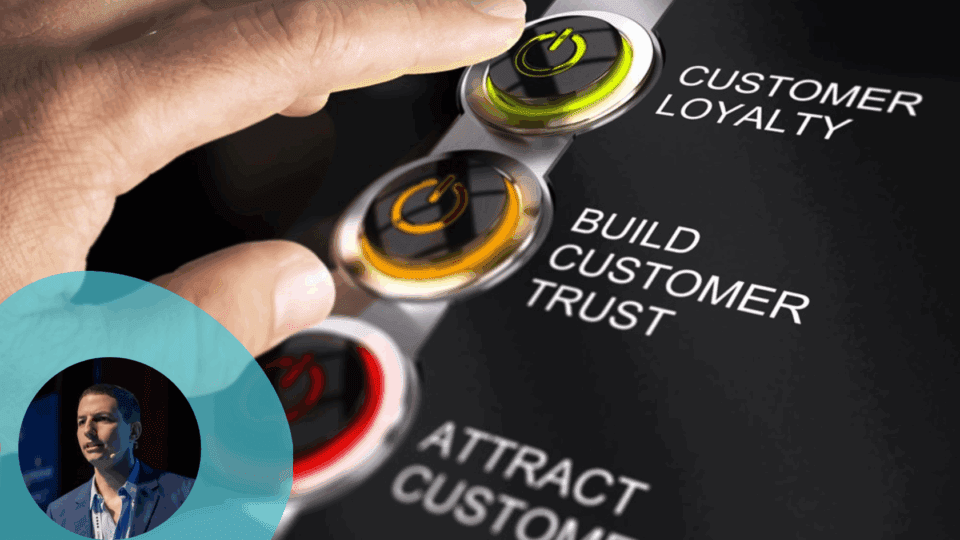Today’s retail customers expect more than just great products — they expect great experiences. They want brands to know who they are, remember what they’ve purchased and anticipate what they’ll need next.
They expect personalized recommendations that are relevant and well-timed. They expect consistency across channels — whether they’re browsing online, shopping in-store or engaging through email or mobile.
In short, customer expectations have changed. And retailers that meet — or exceed — those expectations are the ones that earn long-term loyalty and repeat business.
In this new environment, loyalty isn’t won with discounts or points alone. It’s earned through smart, seamless and personalized engagement. Here are seven best practices every retail marketer should follow to build — and grow — lasting customer loyalty.
1. Leverage Personalized Marketing
Mass marketing is dead. Today’s consumers want messaging that feels personal, not generic. They want to be seen and understood as individuals, not just part of a segment.
Retail marketers that succeed use AI-powered personalization to deliver the right message, to the right customer, at the right time. These messages reflect a customer’s preferences, browsing history and purchase behavior — creating relevance and trust.
Personalization also improves ROI. Customers who feel understood are more likely to buy again and spend more. With GenAI and machine learning, marketers can now create dynamic, data-driven campaigns that scale personalization — without increasing workload.
2. Deliver Omnichannel Experiences
Retail journeys rarely happen on a single channel. A customer might see an Instagram ad, research the product via Google, browse the website and finally purchase in-store. Inconsistent experiences at any step can break trust and reduce conversion.
Retailers must connect the dots. A fully integrated CRM platform ensures customer data flows seamlessly across all channels, so shoppers don’t need to reintroduce themselves at every touch point.
From email to SMS, social media to in-store — delivering a cohesive brand experience means meeting customers where they are, with continuity and context.
This also includes symmetric messaging across outbound and inbound channels. With tools like a Digital Experience Platform, retailers can ensure that the same message or offer seen in an email, push or SMS is also reflected in the app or on the website — delivering a truly seamless journey.
3. Use Gamification for Zero-Cost Retention and Data Capture
Gamification is an increasingly powerful tactic for building loyalty and capturing zero-party data. Through games, quizzes and challenges, retailers can engage customers in a fun and rewarding way — without relying on traditional discounts.
Gamified experiences also invite customers to share preferences and intentions voluntarily, giving marketers valuable zero-party data. This data can then be used to create more personalized journeys, recommendations and offers.
Used well, gamification drives repeat visits, deepens engagement and strengthens long-term loyalty at a minimal cost.
4. Employ an Integrated CRM Platform
Today, a CRM marketing system is no longer a “nice to have” — it’s essential. To personalize and orchestrate effectively, retailers need a platform that combines a Customer Data Platform (CDP) and a Multichannel Marketing Hub (MMH).
A CDP centralizes data from all customer interactions — including gamified experiences that reveal customer preferences. An MMH activates that data — enabling marketers to build and deploy campaigns that are timely, relevant and channel-agnostic.
When these systems are siloed, the customer experience suffers. But when unified in a single platform, marketers can act fast, scale personalization and deliver consistent experiences at every touchpoint.
5. Avoid Marketing Fatigue
During peak retail seasons — holidays, back-to-school, Mother’s Day — customers are bombarded with marketing. The temptation is to send more. But more isn’t better if it leads to fatigue.
Too many messages — especially irrelevant ones — cause unsubscribes to spike and loyalty to erode. To avoid this:
- Limit frequency and focus on high-value messages
- Use AI to determine the best time and channel to reach each customer
- Dynamically adjust cadence based on real-time engagement
Marketers that respect the customer’s attention earn more of it over time.
6. Embrace Positionless Marketing
Retail marketers wear many hats — creative, strategist, analyst and channel manager. Waiting for other departments to move slows execution and stifles creativity.
Positionless Marketing is a new approach that removes internal bottlenecks by empowering marketers to do more — independently. With the right platform, a marketer can:
- Instantly create personalized messages
- Launch multichannel campaigns
- Analyze results in real time
We have seen that marketers believe the role of the retail marketer is evolving — requiring more agility, broader skills and greater tech fluency than ever before.
This freedom allows marketers to respond quickly to customer behavior — which is exactly what shoppers expect.
Positionless Marketing also helps teams scale smarter. Instead of hiring for narrow roles, brands can build agile teams where any member can create, execute and optimize campaigns with the support of AI.
7. Final Thought – Don’t Make Every Interaction a Transaction
Consumer loyalty is no longer just about points and perks. It’s about creating connected, personalized experiences that show customers you know them — and value them. Don’t make every interaction a transaction. Instead engage in conversational content.
By embracing these seven best practices, retail marketers can deliver the smarter, more relevant engagement customers expect — and drive deeper loyalty, repeat purchases and long-term relationships.
The tools are here. The expectations are set. Now is the time to lead.
Rony Vexelman is Optimove’s VP of Marketing, leading the company’s marketing strategy across regions and industries. Previously, Vexelman was Optimove’s Director of Product Marketing, leading product releases, customer marketing efforts and analyst relations. Vexelman holds a BA in Business Administration and Sociology from Tel Aviv University and an MBA from UCLA Anderson School of Management.




